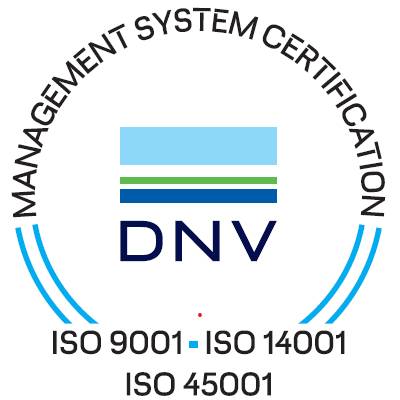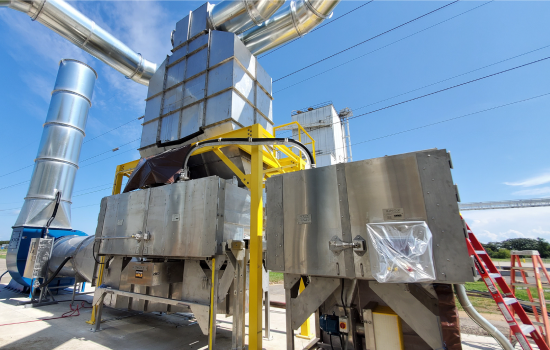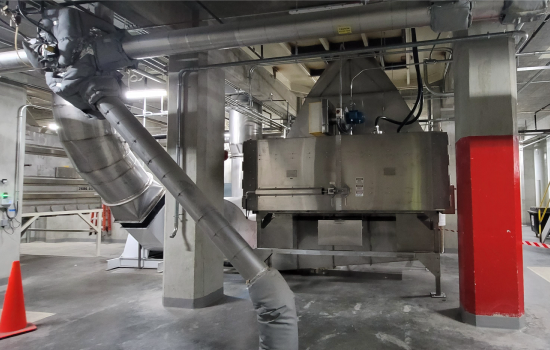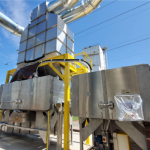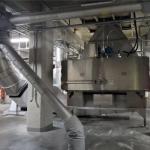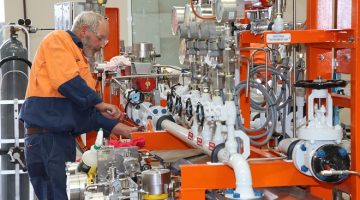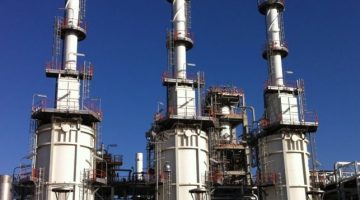IonO2x®Odour Elimination
IonO2x® Odour Elimination System is a patented, true Non-Thermal Oxidation (NTO) Technology that provides proven odour elimination of offensive organic odours while satisfying regulatory requirements and eliminating nearby odour complaints.
Odourous gases that can be treated include humid or dry process exhaust gases from animal and fish feed manufacturing, pet food production, human food preparation, sewage treatment plants and other nuisance organic odours found in a variety of other industrial and commercial applications.
IonO2x®provides many advantages over other commonly used odour control alternatives, such as, bio filters, thermal oxidizers, regenerative thermal oxidizers, packed tower scrubbers and ozone injectors.
Why choose IonO2x®Odour Elimination Systems?
- Odour Elimination of 90-95+%
- Patented True NTO Technology
- Energy Efficient
- Low Operating Costs
- Only Consumable - Electrical Energy
- No Green House Gas Emissions from fuel gas
- No water or chemical usage
- Single-unit system can treat up to 100,000 m3/hr (60,000 ACFM)
- Can treat any volume of air with multiple systems
The Science Behind IonO2x®
IonO2x®NTO Technology relies on planar, dielectric barrier, high voltage electrodes, spaces with a narrow gap between ground electrodes. The electrodes are connected to a rapidly pulsing, high voltage power supply. This produces a rapidly reversing, high intensity electrical flux within the electrode air gap. The contaminated gas stream, requiring odour elimination, is passed through the electrode gap. The high intensity electric flux density fractures volatile organic compound (VOC) molecules and strips & heats, to extremely high temperatures, very low mass electrons. Large volumes of micro discharge streamers (essentially miniature lightning bolts, which produce a violet glow) are created. When the discharge streamers collide with diatomic oxygen and water vapour molecules in the gas stream, highly reactive oxidative radicals, known as Reactive Oxygen Species (ROS) and Hydroxyl radicals (OH radicals) are formed. An extremely reactive mixture of ionized gases and very high temperature electrons, described in scientific terms as “Non-Thermal Oxidation” or “NTO,” is produced.
Within the non-thermal plasma, ROS, OH and free electrons instantaneously react with the fractured VOC molecules, with the predominant end products being water vapor and carbon dioxide. The key advantage of this method of odour elimination (or VOC oxidation), is that it allows oxidation reactions that would otherwise only occur at high temperatures of .1350 degrees F (or 730 degrees C), to proceed rapidly, with very little measurable heat rise. Since there is little sensible heat rise of the treated gas stream, NTO technology is very energy efficient.
Performance of IonO2x®Dielectric Barrier Discharge NTO Odour Elimination Systems:
- IonO2x®NTP systems routinely achieve VOC destruction removal efficiencies of 85 to 95+% as measured from before and after treatment samples.
- IonO2x®NTP systems routinely achieve odour reduction of 80 to 95+% based upon olfactory analysis of before and after treatment samples.
- IonO2x®NTP systems have low operating costs. The only consumable is electricity. Typical system electrical power demand for process gas odour elimination ranges from 0.3 to 0.7 watts per cubic meter per hour of gas flow rate.
- IonO2x® systems are reliable. Typically, they will operate many thousands of hours with continuously effective VOC oxidation and odour elimination.
- IonO2x®NTP systems have low maintenance costs. Other than the control panel air conditioner, the power supply cooling fan, the high voltage transformer – reactor cooling fan, IonO2x®systems have no moving parts. The only consumable item is the air filter for the transformer-reactor cooling fan. Factory maintenance personnel can be easily trained to look after the system.
Target industries:
- Alumina refineries
- Applications with spray drying
- Coffee roasters
- Fertiliser plants
- Food, generally
- General industrial
- Malting plants
- Pet food
- Pulp and Paper
- Tobacco processing
- Waste Water & sewage

